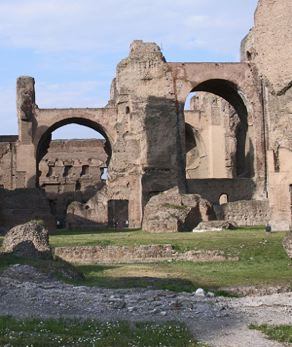 Last night’s devastating earthquake, which killed at least 92 people in central Italy, also struck at the heart of Italy’s historical legacy, ruining dozens of ancient historic buildings and monuments and damaging others as far away as Rome.
Last night’s devastating earthquake, which killed at least 92 people in central Italy, also struck at the heart of Italy’s historical legacy, ruining dozens of ancient historic buildings and monuments and damaging others as far away as Rome.
The 6.3 magnitude quake rattled an area about 70 miles from Rome, near the provincial capital of L’Aquila in the Abruzzo region.
It struck around 3:30 a.m. local time as most people slept.
The 14th century Basilica Santa Maria di Colemaggio was among the most famous structures damaged. A nave wall in the church collapsed, taking with it some lavish frescoes and celebrated Gothic architecture. The basilica is the site of an annual pilgrimage in honor of Pope Celestine V, who is buried there.
The quake also caused the bell tower of the nearby Basilica of San Bernardino to collapse, and damaged the 16th century Forte Spagnolo, one of the best-preserved castles of the Renaissance era.
One unconfirmed report also said that the Porta Napoli was destroyed in the quake. The structure was built in 1548 to honor Holy Roman Emperor Charles V.
 In Rome, tourism officials said that the quake was strong enough to cause some damage to the Baths of Caracalla. These ancient Roman public baths date back to the 3rd century and are extremely popular with tourists.
In Rome, tourism officials said that the quake was strong enough to cause some damage to the Baths of Caracalla. These ancient Roman public baths date back to the 3rd century and are extremely popular with tourists.
Small towns around L’Aquila such as Tempera and Paganica reported that virtually every building in the historic town center had been flattened by the quake, which destroyed thousands of years of history in one fell swoop.
The Italian Cultural Ministry said that it is too soon to know the extent of the damage, but that it was significant. They added that resources would first be allocated to search and rescue efforts before assessment of damage to monuments would be done.
Italian Prime Minister Silvio Berlusconi declared a state of emergency this morning as thousands of aid workers and rescue crews rushed to the area with supplies, tents and search equipment. Thousands of people may still be trapped under the rubble, and up to 50,000 may have been made homeless after their homes collapsed.
Visitors to Italy are advised not to travel to the area. The L’Aquila to Rome highway was closed in the aftermath of the quake and so far there is no word on when it will be reopened.
Central Italy is prone to earthquakes because it lies in the path of two major fault lines. In the last two decades several quakes have rocked the area and killed hundreds of people, including one in October 2002 which killed 30 people, and one in 1997 which killed 13 and damaged many priceless buildings.
After a 6.9 magnitude quake in 1980, building standards were introduced which were intended to ensure that modern buildings could withstand a powerful tremor, but older buildings are not required to be retrofitted.
By Karen Elowitt for PeterGreenberg.com.
Related links: CNN, New York Times, Los Angeles Times, Associated Press
Related articles on PeterGreenberg.com:












